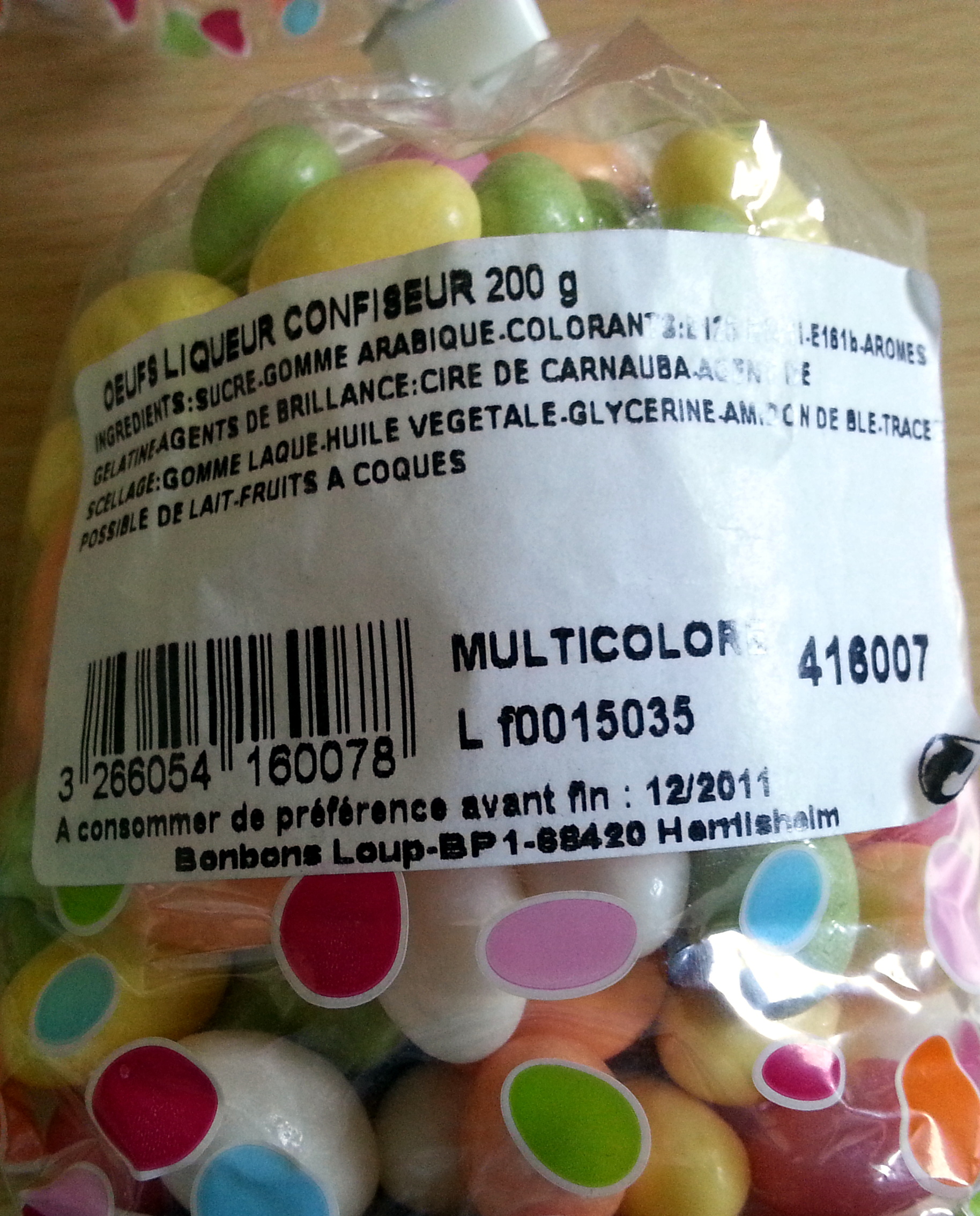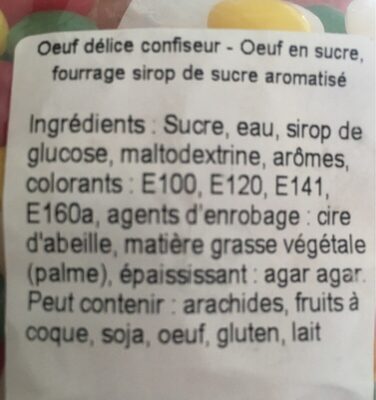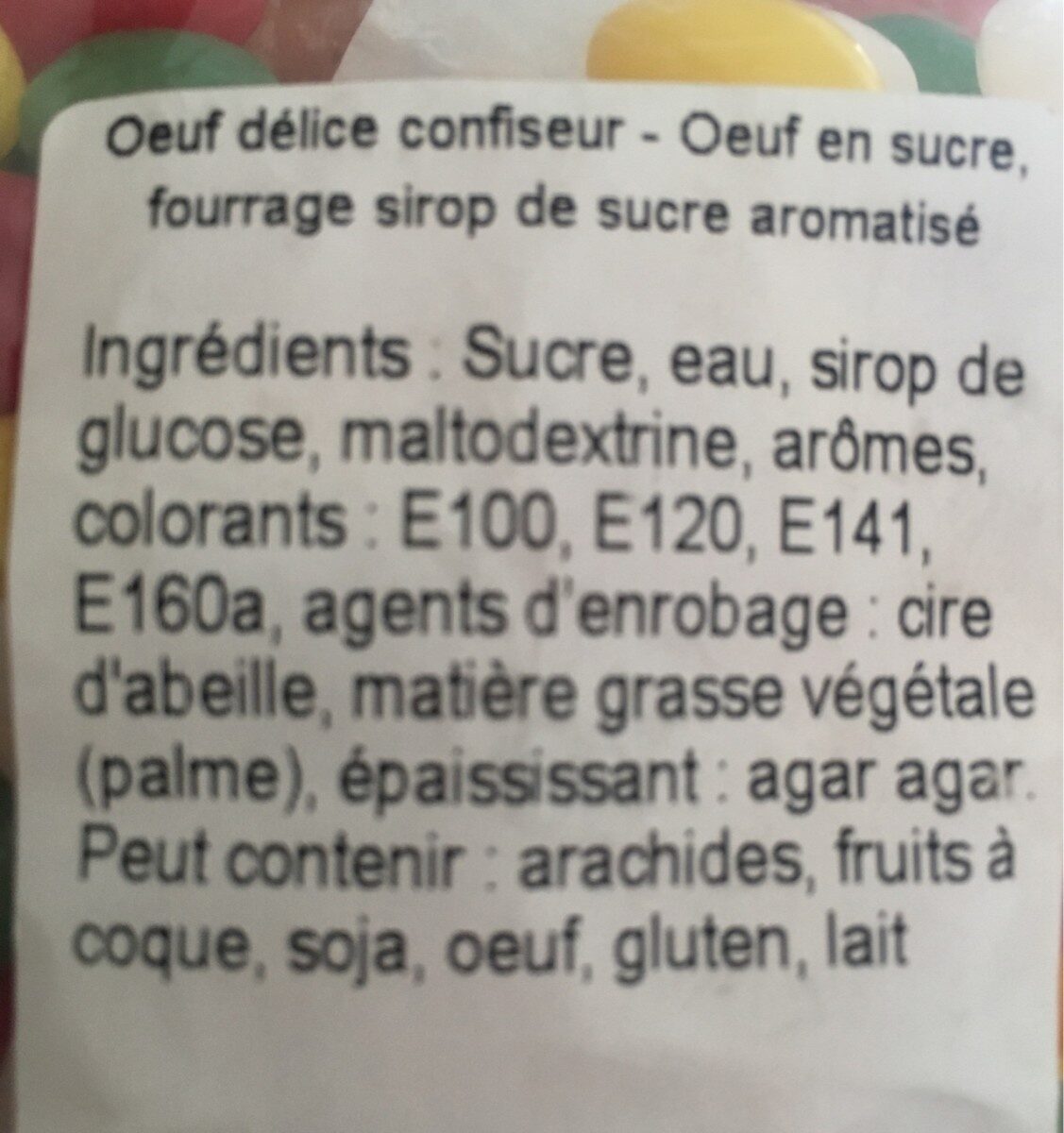Oeufs delice confiseur - Confiserie Adam - 200 g
This product page is not complete. You can help to complete it by editing it and adding more data from the photos we have, or by taking more photos using the app for Android or iPhone/iPad. Thank you!
×
Barcode: 3266054160078 (EAN / EAN-13)
Common name: Œuf délice confiseur - Œuf en sucre fourrage sucre aromatisé.
Quantity: 200 g
Brands: Confiserie Adam
Categories: Snacks, Sweet snacks, Confectioneries, fr:Confiseries à la liqueur
Labels, certifications, awards:
Green Dot
Manufacturing or processing places: France, Herrlisheim
Stores: Leclerc
Countries where sold: France
Matching with your preferences
Environment
Packaging
Transportation
Report a problem
Data sources
Product added on by jeanbono
Last edit of product page on by packbot.
Product page also edited by beniben, desan, kiliweb, manu1400, moon-rabbit, openfoodfacts-contributors, pamputt, sebleouf, yuka.Rm9JL0w3WXU5c1FwaGZNVCtEanMyYzlsNTUvMVVrMm5ET280SVE9PQ.










